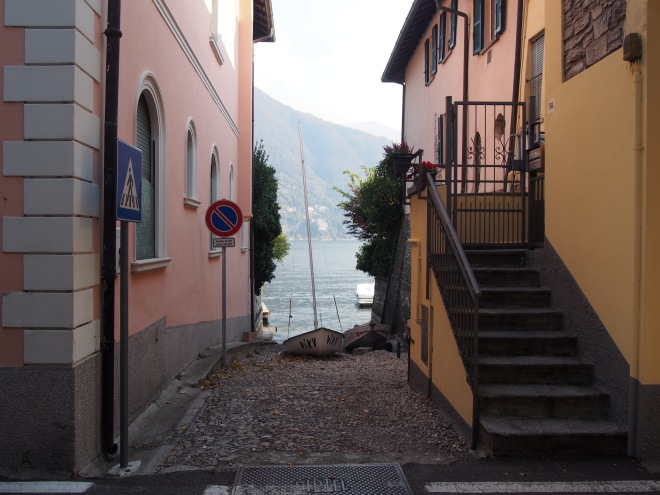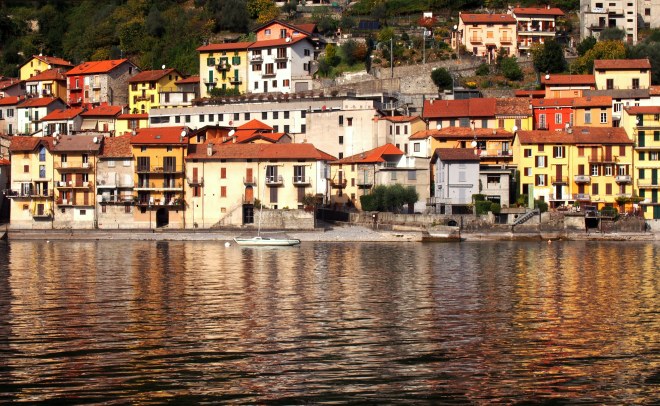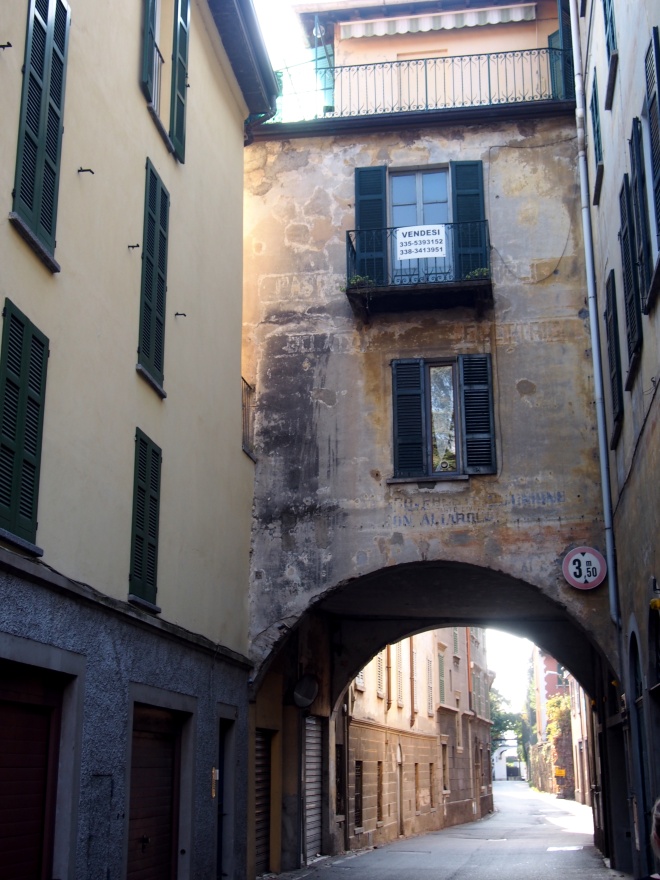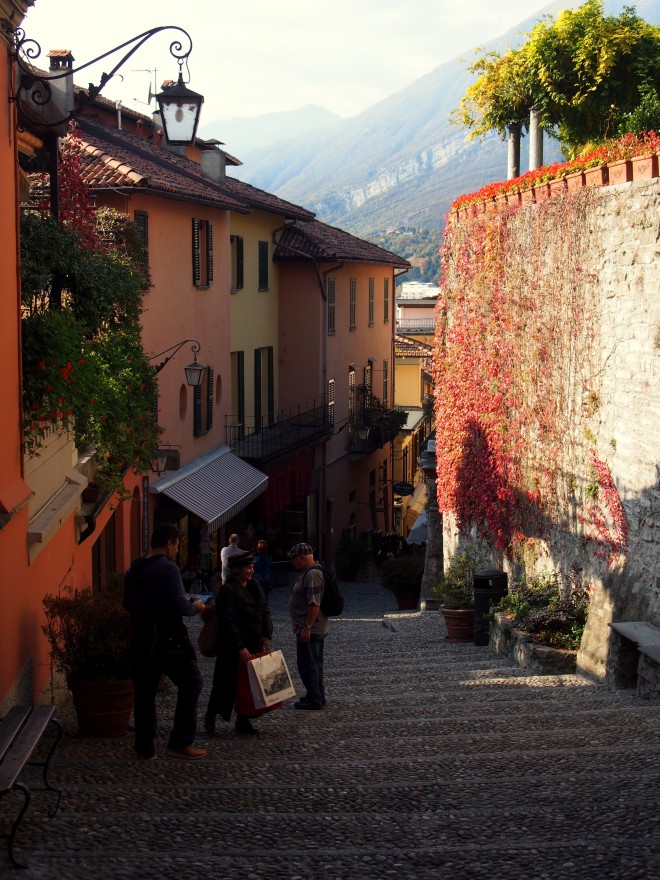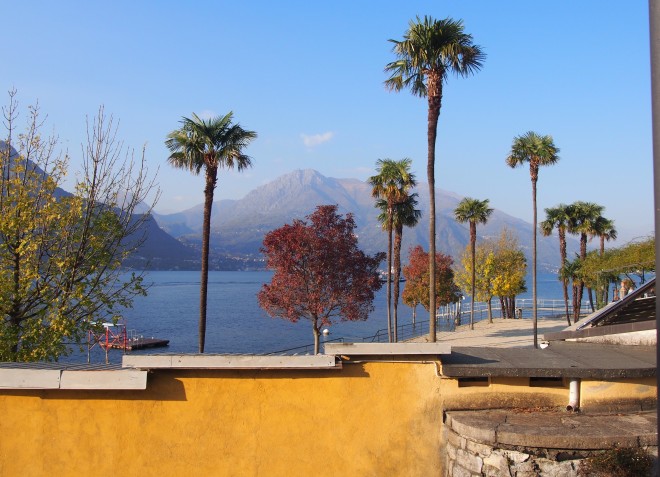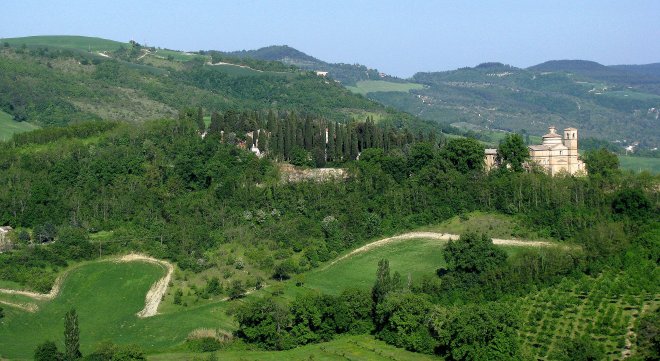A late October wander around some of the quiet villages that hug the edges of Italy’s Lake Como provides a major contrast to the main tourist centres. As the air increasingly hints of winter, during weekdays it’s possible to walk for hours while rarely sighting another person. Local buses seem to travel at times unconnected with their published timetables, matching the random hours of restaurants and alimentari. More reliable ferries provide economical travel around the lake, offering the chance to hop off and explore.
Last year’s visit was enhanced by the generosity of friends who lent their village house for a relaxing week, complete with its expansive views of the lake and mountains. Most of the time a wildfire burned on high, causing a smoky haze. Locals attributed this rare fire event to the changing climate.


